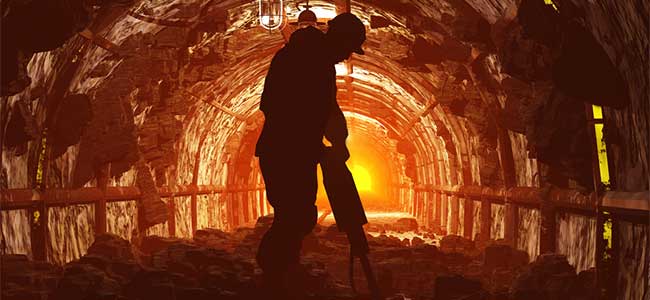
New Proposed Rule Focuses on Miner Exposure to Silica Dust
The Mine Safety and Health Administration's (MSHA) proposed rule suggests a decreased Permissible Exposure Limit (PEL) for respirable crystalline silica.
- By Alex Saurman
- Jul 07, 2023
In the mining industry, workers can be exposed to many hazards both through what they do and their environment.
Last week, the Mine Safety and Health Administration (MSHA) announced that its new proposed rule would address one of these hazards—respirable crystalline silica.
Miners can face exposure to respirable crystalline silica, known as silica dust, through “cutting, sawing, grinding, drilling, and crushing stone, rock, concrete, brick, block, and mortar,” per OSHA. When workers breathe this in, they may be more likely to get lung cancer, silicosis, which can lead to difficulty breathing caused by scar tissue, or other health issues. Last year, a study was published suggesting a link between silica dust and black lung.
“Miners like a crusher operator at a California sand and gravel mine or a roof bolter in a West Virginia coal mine should never be forced to choose between preserving their health and providing for themselves and their families,” Assistant Secretary for Mine Safety and Health Chris Williamson said in a news release. “This proposed rule furthers the Mine Act’s clear instruction to prioritize miners’ health.”
According to the news release, if passed as is, the proposed rule would decrease the Permissible Exposure Limit (PEL) of respirable crystalline silica to 50 micrograms per cubic meter of air (µg/m3) or lower over eight hours, the same PEL OSHA set in 2016.
Currently, for coal miners, the exposure limit for respirable crystalline silica is 100 µg/m3; and in metal and nonmetal mines, the PEL for “the most common form of crystalline silica,” quartz, is also 100 µg/m3, per the proposed rule.
If the level of exposure to respirable crystalline silica is greater than the proposed PEL, employers would be required to “take immediate corrective actions,” per MSHA.
Williamson said, “The purpose of this proposed rule is simple: prevent more miners from suffering from debilitating and deadly occupational illnesses by reducing their exposure to silica dust. Silica overexposures have a real-life impact on a miner’s health.”
But this proposed rule could change that negative impact. In fact, per the rule, the risk of death from silica exposure is anticipated to decrease by 9.5 percent.
Additional topics discussed in the proposed rule address medical surveillance and respiratory protection.
Editor’s note: As of July 6, the proposed rule has not been published on the Federal Register. As noted in the document, available on MSHA’s website, “Though it is not intended or expected, should there be any discrepancy between the document posted here and the document published in the Federal Register, the Federal Register publication controls.”
About the Author
Alex Saurman is a former Content Editor for Occupational Health & Safety,who has since joined OH&S’s client services team. She continues to work closely with OH&S’s editorial team and contributes to the magazine.